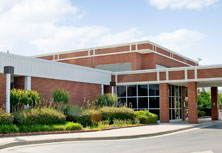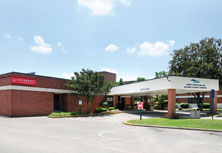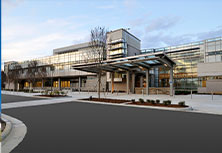Common Audiology Terms
Outer Ear: consists of the pinna (auricle) and ear canalMiddle Ear: consists of the tympanic membrane, middle ear cavity, and ossicles
Inner Ear: consists of the cochlea, vestibule, and semicircular canals. The cochlea is involved in the hearing process and the vestibule and semicircular canals are a part of the balance system.
Pinna (Auricle): the visible external portion of the ear
Tympanic Membrane: eardrum
Ossicles: the three bones of the middle ear (malleus, incus, and stapes)
Cochlea: the bony, spiral-shaped, fluid-filled cavity of the inner ear containing the nerve endings essential for hearing. The main function of the cochlea is to transmit the mechanical vibration of the middle ear into nerve impules
Audiogram: graph used to plot hearing thresholds
Unilateral: one ear
Bilateral: both ears
Hard-of-hearing: an individual with some degree of hearing loss
deaf: an individual with severe-to-profound hearing loss
Deaf: an individual with severe-to-profound hearing loss who belongs to the Deaf community
Congenital Hearing Loss: hearing loss present from birth
Acquired Hearing Loss: hearing loss that occurs after birth
Pre-lingual Hearing Loss: hearing loss that occurs before speech and language are developed
Post-lingual hearing Loss: hearing loss that occurs after speech and language are developed
Sensorineural Hearing Loss: hearing loss due to the sensory and/or neural portion of the ear (inner ear). This type of hearing loss is typically permanent.
Conductive Hearing Loss: hearing loss due to the mechanical part of the ear (inner and/or middle ear)
Mixed Hearing Loss: involves a combination of sensorineural and conductive hearing loss
Auditory Neuropathy Spectrum Disorder: auditory disorder due to the dysfunction of the synapses (connections) between the sensory cells of the cochlea and the auditory nerve
Acoustic Neuroma (Vestibular Schwanoma): typically benign tumor that grows on cranial nerve VIII (auditory nerve)
(Central) Auditory Processing Disorder: difficulties in the perceptual processing of auditory information in the central nervous system
Presbycusis: hearing loss due to aging, which is typically sensorineural in nature
Tinnitus: the perception of sound when there is no external sound source
Otitis Media: infection of the middle ear often associated with fluid build-up in the middle ear cavity
Ototoxic: capable of causing damage (sometimes permanent) to the ear. Often used to describe medications
Atresia: absence of the ear canal
Microtia: deformity of the pinna in which it is often underdeveloped
Anotia: absence of the pinna
Hearing Aid(s): an electro-acoustic device worn in or behind the ear that amplifies sound
Cochlear Implant: a surgically-implanted device that stimulates the auditory nerve to bring a sense of sound to an individual with profound hearing loss
Assistive Listening Device: any device that can assist/improve an individual’s ability to hear in his or her day-to-day life (e.g. FM system & vibrating alarm clock)











